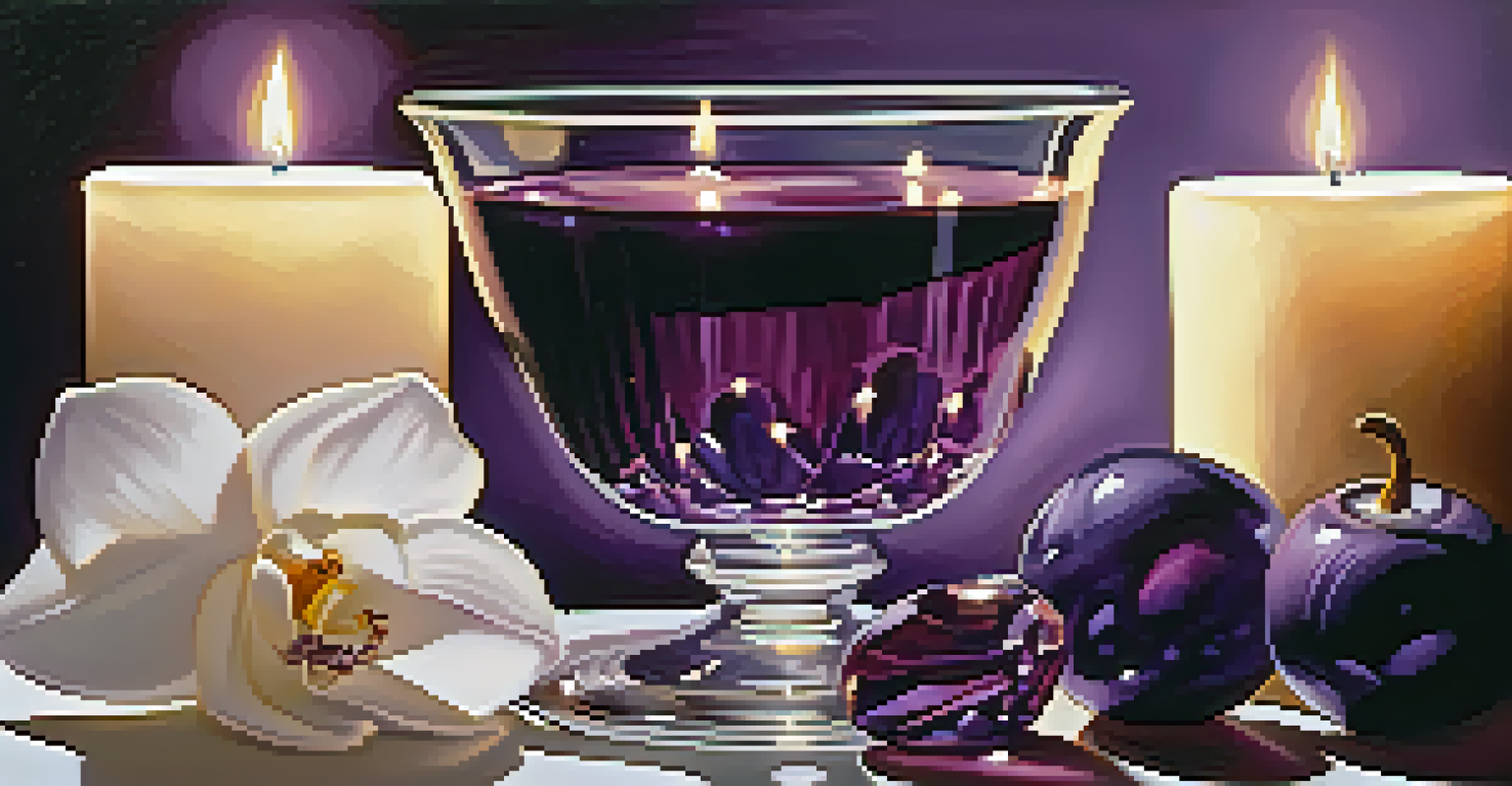Understanding Color Symbols and Their Spiritual Meanings

The Basics of Color Symbolism in Spirituality
Color symbolism is rooted deeply in various cultures and religions. Each color carries its own vibration and energy, influencing our emotions and perceptions. Understanding these meanings can enhance our spiritual practices and personal growth.
Colors are the smiles of nature.
For example, in many traditions, red symbolizes passion and vitality, often associated with love and courage. Conversely, blue is linked to tranquility and peace, promoting calmness and introspection. Recognizing these associations can help us harness their energy in our daily lives.
By being aware of the colors that resonate with us, we can make more informed choices in our spiritual journeys. This awareness can guide us in selecting colors for meditation spaces, clothing, or even home decor, aligning our environments with our spiritual aspirations.
Red: The Color of Passion and Energy
Red is often seen as a powerful color, symbolizing passion, love, and strength. When we think of red, we may visualize the warmth of a sunset or the intensity of a rose, both evoking strong emotions. In spiritual practices, red is believed to awaken our energy and motivate us to take action.

In various cultures, red holds a prominent place; for instance, in Chinese tradition, it represents good fortune and joy. This illustrates how cultural contexts can shape our understanding of color meanings. By embracing red in our lives, we can ignite our passion and pursue our goals more fervently.
Colors Influence Spiritual Growth
Understanding color symbolism can enhance our spiritual practices and personal growth by aligning our environments with the energies of different colors.
However, it's essential to balance the energy of red with calmness to avoid feelings of aggression or restlessness. Incorporating softer tones or complementary colors can create a harmonious environment that supports both vitality and peace.
Blue: Tranquility and Spiritual Depth
Blue is often associated with calmness, trust, and spiritual depth. It's the color of the sky and ocean, evoking feelings of peace and serenity. In spiritual terms, blue is linked to communication and self-expression, helping us articulate our thoughts and emotions.
The soul is dyed the color of its thoughts.
Many people find blue to be a soothing presence in their lives, whether through nature or art. For instance, a clear blue sky can uplift our spirits and inspire creativity. This connection to nature reinforces the idea that colors can profoundly impact our emotional state.
Incorporating blue into meditation practices or personal spaces can enhance clarity and focus. Whether through blue crystals, candles, or wall colors, embracing this hue can facilitate a deeper connection to our inner selves.
Green: Growth, Harmony, and Renewal
Green is the color of nature, symbolizing growth, renewal, and harmony. It represents the balance between the heart and mind, fostering feelings of stability and safety. In spiritual contexts, green is often associated with healing and abundance.
When we think of green, we might envision lush forests or vibrant gardens, both teeming with life. This imagery reminds us of the importance of nurturing our own growth and well-being. Embracing green in our lives can help us cultivate a sense of peace and connection to the natural world.
Red and Blue: Energy and Calmness
Red symbolizes passion and energy, while blue represents tranquility and peace, illustrating the balance needed between these emotions in our lives.
Using green in our spaces, such as through plants or artwork, can create a refreshing environment that encourages personal development. Additionally, green crystals like emerald are believed to promote healing and prosperity, connecting us with the energies of the earth.
Yellow: Joy, Optimism, and Clarity
Yellow is often associated with joy, optimism, and clarity of thought. This vibrant color can lift our spirits and stimulate our minds, bringing a sense of happiness and energy. In spiritual practices, yellow is linked to enlightenment and intellect.
When we see yellow, it can remind us of sunny days and blooming flowers, both of which evoke feelings of warmth and cheer. This color encourages us to embrace positivity and approach challenges with a hopeful mindset. In many cultures, yellow signifies prosperity and abundance, further enhancing its joyful connotation.
Incorporating yellow into our lives—whether through clothing, decor, or even food—can help create an uplifting atmosphere. Surrounding ourselves with yellow can invigorate our spirits and inspire creativity, allowing us to tackle our goals with enthusiasm.
Purple: Spirituality, Intuition, and Mysticism
Purple is often regarded as a color of spirituality, intuition, and mysticism. Historically associated with royalty and luxury, it reflects a deeper connection to the spiritual realm. Many spiritual traditions link purple to higher consciousness and the awakening of intuition.
When we think of purple, we might envision the enchanting hues of twilight or the rich tones of amethyst crystals. These images evoke a sense of mystery and wonder, inviting us to explore our inner selves and the universe's mysteries. Engaging with purple can encourage us to tap into our intuition and spiritual gifts.
Embrace Nature with Green
Green, symbolizing growth and harmony, encourages personal development and a deeper connection to the natural world.
Incorporating purple into meditation or personal spaces can enhance spiritual awareness and promote a sense of connection to the divine. Whether through clothing, decor, or crystals like amethyst, embracing purple can deepen our spiritual experiences.
Black: Protection, Mystery, and Potential
Black is often associated with protection, mystery, and potential. While it can sometimes carry negative connotations, in spiritual contexts, black is seen as a color that absorbs negativity and shields us from harmful energies. It represents the unknown, inviting exploration and introspection.
When we consider black, we might think of the vastness of space or the depth of a night sky, both of which evoke feelings of wonder and curiosity. This color allows us to confront our fears and embrace the unknown, fostering personal growth and transformation. In many cultures, black is used in rituals to signify protection and grounding.

Incorporating black into our lives—whether through clothing, decor, or meditation practices—can help us create a safe space for reflection and growth. It encourages us to explore our inner depths and confront challenges with courage.
White: Purity, Clarity, and New Beginnings
White is commonly associated with purity, clarity, and new beginnings. It embodies a sense of freshness and renewal, inviting us to let go of the past and embrace new opportunities. In spiritual terms, white is often linked to higher consciousness and divine connection.
When we see white, we might envision a blank canvas or the first snowfall, both symbolizing potential and new possibilities. This color encourages us to approach life with an open heart and mind, ready to receive new experiences. In many cultures, white is used in ceremonies to signify new beginnings and spiritual cleansing.
Incorporating white into our spaces can create a feeling of clarity and tranquility. Whether through decor, clothing, or meditation practices, embracing white can help us foster a sense of peace and readiness for what lies ahead.